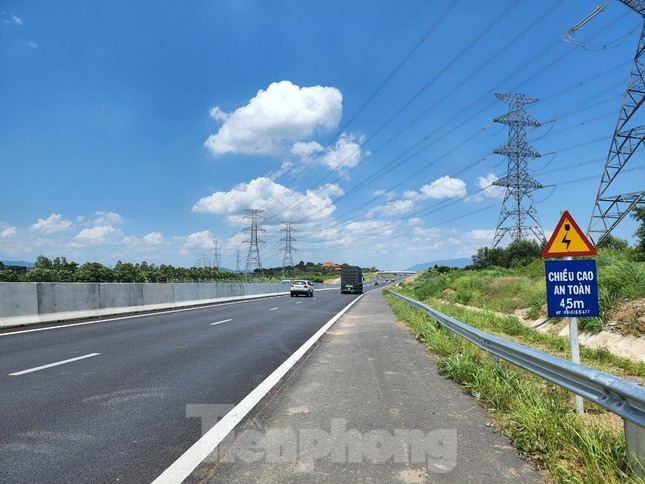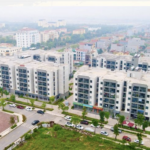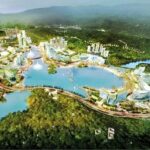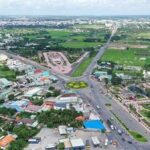Interconnecting Three Provinces
The People’s Committee of Binh Thuan province recently held a meeting to discuss the proposed route for the expressway connecting three provinces: Binh Thuan, Lam Dong, and Dak Nong. The route will pass through Binh Thuan province.
According to the report presented by the Southern Transport Infrastructure Design and Consultancy Joint Stock Company (the consulting firm), the expressway connecting Binh Thuan, Lam Dong, and Dak Nong provinces will be a modern, high-capacity, and safe transportation network once completed. It will effectively link the road network as per the master plan and promote regional connectivity, catering to the ever-increasing transportation demands.
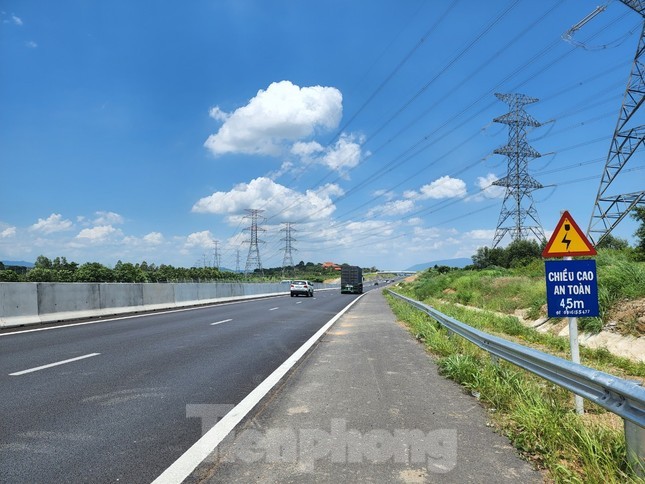
The expressway connecting Binh Thuan, Lam Dong, and Dak Nong provinces will be a modern high-speed route.
The investment plan for the expressway connecting the three provinces is estimated to be approximately 140.6 km in length, with a 43.9 km stretch in Binh Thuan province, a 61.9 km section in Lam Dong province, and a 34.8 km portion in Dak Nong province.
This proposal is considered the most feasible option for connecting the three centers: Phan Thiet City (Binh Thuan), Bao Loc City (Lam Dong), and Gia Nghia City (Dak Nong). It is also the shortest route with the most favorable terrain and orientation, allowing for a direct connection to the North-South expressway on both the western and eastern sides.
Modern Expressway Standards
The expressway connecting Binh Thuan, Lam Dong, and Dak Nong provinces is designed to meet modern expressway standards, featuring controlled access, median barriers, emergency lanes, and advanced signage to minimize traffic accidents. It will significantly reduce travel time and transportation costs for goods and passengers among the three provinces compared to existing routes, thus enhancing transportation efficiency.

The expressway will reduce travel time to the new administrative center of Lam Dong province.
Upon completion, the project will boost the development of high-tech agriculture, tourism, and logistics services, attract investments, expand urban and new rural areas, and add a vital expressway to the national road network, filling the gap for a direct connection between South Central Coast and Central Highlands regions.
Vice Chairman of Binh Thuan Provincial People’s Committee, Mr. Nguyen Hong Hai, requested the consulting firm to collect, survey, evaluate, and supplement data to determine the volume of goods and passenger traffic on the route. He emphasized the importance of considering the total goods and passenger volume within the regional transportation network and calculating logistics costs for goods.
Based on this data, the scale of investment in the expressway connecting the three provinces should be determined to ensure the project’s effectiveness and prevent wastefulness. In developing the investment plan, attention must be given to environmental impact assessments and minimizing the use of forest land…
On April 12, the Central Executive Committee of the Communist Party of Vietnam issued Resolution No. 60-NQ/TW at the 11th Conference of the 13th term. According to the resolution, the three provinces of Binh Thuan, Lam Dong, and Dak Nong will merge to form a new province, tentatively named Lam Dong, with its administrative center in Da Lat City, Lam Dong province.
The new Lam Dong province will be the largest in Vietnam, spanning over 24,233 km². With a projected population of approximately 3,324,400, the merger is expected to catalyze breakthrough and sustainable development across economic and social spheres, enhance the quality of life, and solidify the strategic position of the South-Central Coast and Central Highlands regions.
Regarding the rearrangement of communal-level administrative units, Lam Dong is expected to have 51 new communes (including 9 wards and 42 communes), a reduction of 62.77%, while maintaining the status quo for two communes. Dak Nong is projected to have 28 communes, a decrease of 60.57%, with two unchanged communes. Binh Thuan is anticipated to have 45 communes (including 36 communes and 8 wards, plus the Phu Quy special commune), representing a 62.8% reduction.
Can Surplus Office Spaces Post-Merger be Transformed into Social Housing?
Amid challenges in developing social housing across the country, the Land Management Authority has proposed an innovative solution. They suggest repurposing surplus government offices, resulting from mergers, into social housing. This proposal offers a potential win-win situation by addressing the need for social housing while making efficient use of existing resources.
The Power of Two: Unveiling the Dynamic Duo for a Brighter Future in Phu Yen
“The latest developments in Vietnam’s thriving economy: Two upcoming projects within the Nam Phu Yen Economic Zone have been given the green light, and they are expected to be a game-changer for the region’s investment landscape. With a strategic vision, these projects hold the potential to catalyze economic growth and attract further investment to Phu Yen province, marking a significant milestone in Vietnam’s journey towards prosperity.”

